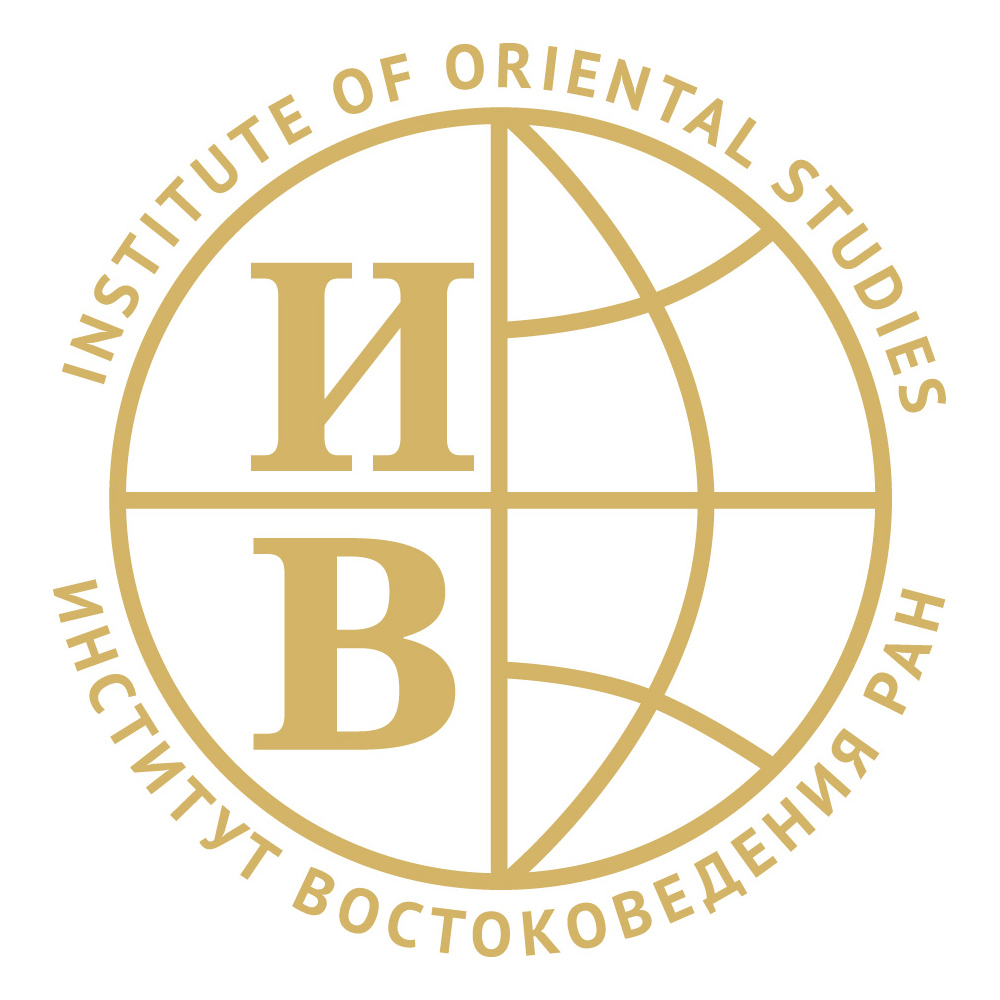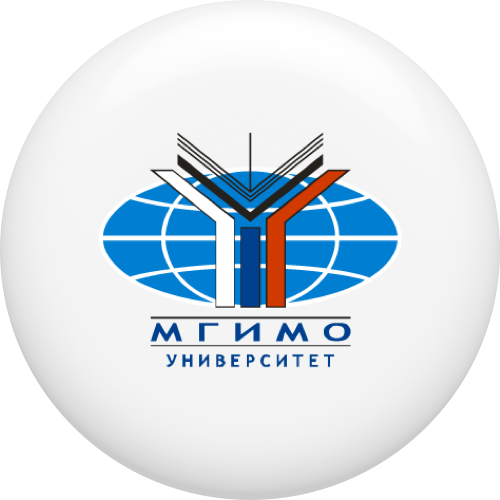
Mardasov Anton
Russia finds neutral zones in Syria essential but tricky
 Russian Deputy Prime Minister Dmitry Rogozin went to Damascus Dec. 18 to meet with Syrian President Bashar al-Assad. Their agenda focused on post-war restoration: Russia particularly eyes cooperation with Syrian authorities on oil drilling, energy, agriculture and infrastructure projects. Rogozin also went to the Russian air base in Khmeimim to address a session dedicated to the operational use of Russian arms.
Russian Deputy Prime Minister Dmitry Rogozin went to Damascus Dec. 18 to meet with Syrian President Bashar al-Assad. Their agenda focused on post-war restoration: Russia particularly eyes cooperation with Syrian authorities on oil drilling, energy, agriculture and infrastructure projects. Rogozin also went to the Russian air base in Khmeimim to address a session dedicated to the operational use of Russian arms.
Remarkably, at a meeting with Rogozin, Assad called the Kurds fighting under American command “traitors.” This is rather telling of Assad's mood. Now that large Islamic State (IS) enclaves have been demolished, the problem of compromise between Assad and the opposition, and the question of the regime’s stability without foreign support, have become the most important aspects of the Syrian conflict.
Moscow repeatedly points out that the successful functioning of de-escalation zones creates the environment for political resolution of the Syrian conflict and boosts the trust between the regime and the opposition. So when Russian President Vladimir Putin made his dramatic statement Dec. 11 about victory over IS and gave yet another order to withdraw troops from Syria, this instruction hardly mentioned the military police force — which is predominantly composed of Sunni Muslims from the Northern Caucasus. According to Sergey Surovikin, the commander of Russia's military group, since Putin’s order went into effect, only one unit of the police has been withdrawn back to Russia, quite possibly from eastern Aleppo, which is controlled by the regime and is not included in any de-escalation zone.
The Kremlin’s idea to summon the Syrian National Dialogue Congress in Sochi and to later embed its results into the stalling Geneva process is fully based on the four existing de-escalation zones. The Kurdish Afrin district may theoretically also become a new de-escalation zone. However, to function steadily, the zones need stability on the lines of contact between government forces and the opposition. With the existing system of control over the cease-fire allowing punitive measures only against the opposition, it is profitable for Damascus and Tehran to delay any real political dialogue with the dissidents, especially as the world community still hasn’t precisely defined the principles of the transition stage that should lead to actual reforms in Assad’s regime.
The Syrian government is evidently ready for dialogue with the opposition and even for some sort of integration with it, provided opposition forces disarm under conditions set by Damascus. Yet that won't lead to a political solution, but will rather look like an enforcement to surrender. That means the regime has every possibility to launch an assault on the de-escalation zones under the excuse of “anti-terrorist operations,” based specifically on the numerous foreign or local pro-Iranian groups. In theory, the fact that Russia devised the de-escalation zones and has positioned its military contingent there should have an impact over its allies, although the reality is different.
In theory, the fact that Russia devised the de-escalation zones and has positioned its military contingent there should have an impact over its allies, although the reality is different.
Moscow seems to understand that it succeeded in establishing its goals for settling the Syrian crisis over other foreign agents: The United States has no comprehensive plan for managing the problem, and the Gulf nations are busy arguing with each other. Yet Russia doesn’t have full control over its allies; neither does it want a fight with them.
The situation in the de-escalation zones is a good example of a "peculiar view" of the peace process by the pro-Damascus coalition. In the Idlib zone, the allied Assad forces and pro-Iranian groups move toward each other from northern Hama and southern Aleppo heading to Abu al-Duhur air base. Their goal is to give the regime control of one-third of the zone. This scenario probably was agreed upon in the negotiations in Astana, Kazakhstan, within the framework of the fight against Hayat Tahrir al-Sham, a radical Islamist alliance. However, the Russian Ministry of Defense's map shows one-third of the zone has already been given to Damascus without any explanation, raising concerns over the potential for discreet cutting off of territories from other de-escalation zones. The Syrian government, with Moscow’s quiet consent, also continues to fight in the East Ghouta zone against two insurgent groups that signed the cease-fire agreements in Cairo and Geneva.
In terms of its conflict potential, the situation in the southern de-escalation zone seems to be most complex. Although the zone was a product of the Astana negotiations, it is functioning under special conditions designed in the framework of the Jordan agreement by Russia and the United States. Israel, however, claims the agreements do not prevent pro-Iranian groups from conducting actions near Israel's border. Rumor had it that, during his October visit to Israel, Russian Minister of Defense Sergei Shoigu agreed to create a buffer area of 5-10 miles around the border between Syria and Israel in the de-escalation zone, free of Hezbollah and pro-Iranian militants.
"It's clear that pro-Iranian troops being positioned near Israeli and Jordanian borders is unacceptable for Israel and the US, but Moscow can't prohibit Tehran from doing it, as the [Syrian] regime's stability depends on the powers supporting it. Russia only makes hints about it, while Iran either pretends not to understand the clues or rotates the troops, which doesn't change much [to the positive side for Israel],” a source close to Russian army intelligence told Al-Monitor. Thus Moscow cannot put a cap on the logistical route from Iran to Syria for Tehran, which, according to some reports, has already started to send trial weapon installments.
To avoid awkward inquiries, Moscow even uses diplomatic ploys to "answer" questions about withdrawing the Iranian proxy powers. “If we mention pro-Iranian groups, maybe someone will be tempted to dub the entire Syrian army as pro-Iranian. So what, should it surrender?” said Sergey Lavrov, Russia’s foreign minister, adding that the most serious threat comes now from American "charges," such as various foreign terrorist gangs tagging along with the US-supported armed opposition groups.
Damascus and Tehran enjoy the public silence about cease-fire violations, understanding that the political agreement on southwestern Syria largely allows both pro-Iranian groups and al-Qaeda affiliates to enter the area. Radicalization of the opposition in this respect is a good excuse for conducting operations in the de-escalation zones, more so when subjective foreign policy factors are added. With Arab-Israeli heated rhetoric on the rise and anti-American sentiments flaring up in the Arab world over US President Donald Trump's decision to recognize Jerusalem as the capital of Israel, Assad’s forces and Hezbollah started to position the troops for a new assault in the southwestern de-escalation zone. Also, Damascus is making appeals to attack the opposition in response to Israeli strikes on government forces designed to mark its “red lines” for the pro-Iranian groups.
In this situation, Moscow's position is important, and Russia can't always distance itself from the Iran-Israeli rivalry in Syria. However, since the Israel Defense Forces' assault in December, some experts on Russia are afraid that, using the defense of Syrian sovereignty as an excuse, Russia has started to send warning signals to Israel, meanwhile testing its arms in battle. For instance, during the December series of attacks that the Israeli military has launched on Syrian facilities, Russian media reported that a Pantsir-S1 air defense system had shot down an Israeli long-range attack, or LORA, missile around al-Kiswah area south of Damascus. Syria was provided with the last installment of Pantsir-S1 in 2013, although it's highly doubtful that the Syrian army is capable of stopping weapons as complex as a quasi-ballistic missile or a multiple rocket launcher.
To alleviate the escalation, it's logical to rely on the Druze armed groups included in Syria's pro-government National Defense Forces. However, since the Druze people also cooperate with Israel, they might minimize the influence of the pro-Iranian forces in the area. Yet Tehran and Damascus are unlikely to reduce their ambitions. Despite the claims about peaceful resolution, Assad’s regime will gradually integrate the opposition-controlled areas by force while imitating the willingness to yield concessions.
Article published in Al Monitor: http://www.al-monitor.com/pulse/originals/2017/12/russia-syria-military-post-war-rogozin-assad.html
Photo credit: REUTERS/Ali Hashisho
Syrian opposition can win, as long as it agrees to lose
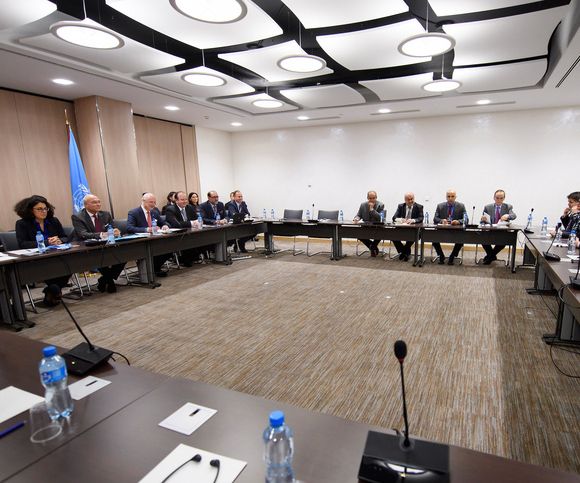 yrian government representatives arrived in Geneva on Nov. 29 — a day late — for the latest round of negotiations aimed at resolving the country’s civil war. The meeting began Nov. 28, but representatives of Syrian President Bashar al-Assad delayed their arrival reportedly until they were assured there would be no discussion of removing Assad from power.
yrian government representatives arrived in Geneva on Nov. 29 — a day late — for the latest round of negotiations aimed at resolving the country’s civil war. The meeting began Nov. 28, but representatives of Syrian President Bashar al-Assad delayed their arrival reportedly until they were assured there would be no discussion of removing Assad from power.
The rebels, however, still insist any settlement must include Assad’s departure.
There are many, many cooks in the kitchen trying to serve up their own resolution to the nearly seven-year war. The United Nations is sponsoring the talks in Geneva — this is the eighth round — but related meetings have taken place in other locations.
Moscow is participating in the negotiations and has shifted its focus from military activities to finding and implementing a political resolution to the conflict. Russia hosted a trilateral summit last week in Sochi in an effort to calm Turkey and Iran after the United States and Russia agreed earlier in November that there is no military solution in Syria. Russia’s summit also allowed for a meeting of minds ahead of the Syrian National Dialogue Congress that Russia plans in Sochi. The congress is tentatively scheduled to be held sometime between Dec. 1 and Dec. 8, during the break between the first and second stages of the Geneva talks.
Also last week, Saudi Arabia hosted a preparatory three-day meeting of opposition parties in its capital. Moscow praised Saudi Arabia’s efforts to unite the opposition for the Geneva talks and to help draft a new Syrian Constitution. Moscow sent Alexander Lavrentiev, Russia's special envoy to Syria, to the meeting.
During those talks, the various opposition groups chose Nasr al-Hariri, the head of the opposition’s High Negotiations Committee, to lead them in negotiations. He had filled the same role at previous talks in Geneva and Astana, Kazakhstan.
The 36 opposition representatives at Geneva include eight from the Syrian National Coalition, five from the National Coordination Committee for Democratic Change, eight independent delegates, four each from the Cairo- and Moscow-based platforms, and seven from military factions.
The armed opposition delegates will represent Jaish al-Islam, Failaq al-Sham, Jaish al-Nasr, Jaish al-Yarmouk, several Free Syrian Army (FSA) factions and the Free Tribes’ Army, a confederation of tribal militias trained by Jordan.
Hariri took over the High Negotiations Committee from Riyad Hijab. Before Hijab resigned Nov. 20, he made it clear that under his leadership, the High Negotiations Committee had been pressured into making concessions that favored Assad.
Russian Foreign Minister Sergey Lavrov hailed Hijab’s resignation as “the retreat of radically minded opposition figures from playing the main role.” However, Hariri reaffirmed his stance that a transitional governing body should be established without Assad. Hijab also said Russia’s proposal to host the Syrian National Dialogue Congress in Sochi will not contribute to the political process, as talks on Syria should be organized under UN auspices
At first glance, one might expect the many separate summits and meetings to force Assad and the opposition to bring the armed conflict to an end. Arab and other countries have extended their seemingly warm welcome to Russia’s efforts — if the attempts are really aimed at reforming the system and preparing the ground for Syrian fair elections in the future.
However, the “if” matters most. Russia’s military intervention in the war in 2015 tipped the scales in favor of Assad’s regime, and Russia has strongly backed Assad's remaining in power. For these reasons, opposition representatives have said the upcoming Sochi congress amounts to “the regime negotiating with the regime.”
Also, many opposition representatives object to the inclusion in their ranks of what they call “puppet opposition” groups that are considered quite loyal to the regime and Syrian intelligence. Syria faced demonstrations against the groups’ participation in negotiations, as they have nothing to do with the Syrian revolution.
Nevertheless, the representatives were included in the “unified” delegation in Geneva, even though decision-making on behalf of the opposition requires an approval from 75% of the delegates. Some representatives of the opposition believe the “puppet” groups will help the regime block any proposals it doesn’t like.
The Syrian regime has wielded considerable negotiating power at the Geneva talks as, on the one hand, it enjoys the support of Iran and Russia and, on the other hand, Syrian forces mounted successful military operations in eastern Syria. The regime quite clearly is ready to enter into a dialogue with the opposition and even take it back into the country — but only if the opposition agrees to abide by any conditions imposed by the authorities.
Regardless of all the divisions and disagreements, the pro-government coalition remains relatively united both militarily and politically. The forces that oppose the regime, on the contrary, are still splintered. Moscow is well-aware that despite large-scale international support, the opposition is being pulled in different directions by its various allies. Russia has been ruling the roost as the country that managed to uphold and protect Syrian state institutions and impose its rules of the game in the absence of Washington's clear agenda in Syria, the Saudi-Qatari crisis and internal problems in the Gulf region in general.
Russia is approaching a Syrian settlement with a “healthy skepticism,” which, by the way, appeals to the masses. Most Russians are quick to equate any FSA group with the Islamic State and continue to believe in the legitimacy of the ruling regime. The prove-that-they-are-not-terrorists stance toward the armed rebels allowed Moscow to carry out strikes against moderate opposition groups, only to recognize them as such during the talks. That was followed by the emphasis on Moscow's ability to seek and accept a compromise and hold a dialogue with all the parties to the conflict, regardless of the voting outcome. Moscow, thus, stressed its readiness to recognize any politician the Syrian people will vote for, be it Assad or his opponents.
I would like to be in the wrong here, but the current momentum has Assad as the sole victor in the civil war, while ostensibly factoring in the opposition's sentiments. But his Nov. 20 visit to Sochi shows there is no equal, full-fledged rival to the authorities among the opposition forces. In this sense, holding the Syrian National Dialogue Congress — even though it allows Kurdish participation — implies granting equal voting rights to the puppet opposition.
Moscow’s stance is also apparent if we consider its attitude toward the de-escalation zones. Russian diplomats recognize the legitimacy of local councils as civil administrations of the opposition-controlled territories, and military negotiators are ready to work with them on the ground. However, the punishment mechanism for violations has remained unilateral. Essentially, the opposition, as a defeated party, is granted some concessions in the form of the de-escalation zones to avoid further operations and prevent new bloodshed. At the same time, the de-escalation zones are largely meant to gently and gradually reintegrate the opposition and bring it under the control of the regime. Perhaps this accounts for Moscow’s statements that, to date, governmental forces control more than 98% of the territory, including the de-escalation zones and the areas run by the Syrian Democratic Forces.
Article published in Al Monitor: http://www.al-monitor.com/pulse/originals/2017/11/syria-opposition-meeting-geneva-assad-russia.html
Photo credit: REUTERS/Martial Trezzini
Режим вольно трактует понятие "антитеррористическая операция"
 От саммита глав России, Турции и Ирана в Сочи никаких прорывных решений не ожидалось. На мой взгляд, эта встреча преследовала цель сверки часов и успокоение Москвой своих союзников.
От саммита глав России, Турции и Ирана в Сочи никаких прорывных решений не ожидалось. На мой взгляд, эта встреча преследовала цель сверки часов и успокоение Москвой своих союзников.
Не секрет, что Иран вполне официально высказывал недоумение по поводу того, зачем вообще нужен Конгресс национального диалога Сирии и какую цель он преследует. Но больше Тегеран беспокоило содержание тех договоренностей, которые были озвучены в ходе совместного заявления президентов России и США во Вьетнаме, опирающегося на конфиденциальный документ от 8 ноября в Аммане.
Что касается Турции, то ее в первую очередь беспокоит курдская проблема. С одной стороны, есть давно достигнутые договоренности о разграничении Идлиба. Турецкие военные находятся в самом Идлибе и все свои аванпосты фактически расположили вокруг курдского Африна. Турки реализуют стратегию сдерживания курдов в этом анклаве, и это для них — основная задача. Параллельно в рамках астанинского процесса они проводят переговоры с непримиримыми группами и, опираясь на оппозицию, проводят рейды против иностранных боевиков, связанных с "Аль-Каидой".
Кроме того, "большой тройке" необходимо было прояснить вопросы, связанные с политическим урегулированием. В декабре в Сочи планируется проведение Конгресса национального диалога народов Сирии, который пытаются вписать в Женевский процесс. Конгресс пройдет между двумя раундами переговоров в Швейцарии. Идея сама по себе спорная – лично я считаю ее несвоевременной. Понятно, что необходимо дать толчок Женевскому процессу и как можно быстрее конвертировать во что-то реальное Астанинские договоренности. Но мирное урегулирование сирийского кризиса, о котором все говорят, это довольно-таки абстрактное понятие, и все его видят по-разному.
Арабские страны и иностранные государства, выступающие против президента Сирии Башара Асада и действующего режима, настаивают на формировании переходного правительства и продолжают спорить, какое место должен занимать Асад на этот период. В любом случае, они выступают за проведение кардинального реформирования существующего сирийского режима.
Но каким этот процесс видят Россия, Иран и Дамаск? Сейчас, несмотря на обещание проведения всех этих реформ в Сирии, по сути идет манипулирование ситуацией. Режим вольно трактует понятие "антитеррористическая операция" и проводит операции в Восточной Гуте против тех групп, которые подписали соглашение о режиме прекращения огня только с Россией в Каире и Женеве, при этом Москва не особо препятствует этому. На этом фоне цель предстоящего Конгресса — уровнять в правах реальную оппозицию и многочисленных марионеток, созданных сирийским режимом.
И после того. как эти силы будут уравнены в правах и голосах, можно проводить линию – да, все силы имеют право на существование, но они должны следовать той линии, которую диктует Асад. По факту, происходит легитимация существующего режима, а режим и оппозиция заведомо ставятся в неравные условия на переговорах.
При конвертировании этой схемы в какое-то переходное правительство уже сейчас понятно, кому будут принадлежать ведущие позиции. Сейчас Москва может обещать всем, что действительно могут быть проведены реформы, и они действительно могут быть проведены, но по тому сценарию, который расписан выше. То есть формально – это реформы, по факту – мало что изменится. И главное тут то, что это, в принципе, опасный сценарий, так как существующий сирийский режим, он, на самом деле, давно уже отжил свое. И тут, конечно же, необходимы реальные реформы, необходимо формировать правительство, в котором будут присутствовать различные национальности и оппозиция, в которой есть опытные офицеры и политики.
Москва может апеллировать тем, что может образоваться вакуум власти, который тут же будут заполнять радикалы и прочие. Но мероприятия, способствующие дальнейшему поддержанию режима — это уже сам по себе фактор для возникновения радикализма.
Здесь много вопросов, и по сути, пока еще не ясна позиция игроков саммита, прошедшего накануне в Сочи. Формально, они могут пока действовать в русле урегулирования, но будет ли оно действовать реально или декоративно, мы узнаем в дальнейшем, но явно не в ближайшие месяцы.
Статья опубликована в издании Спутник: https://ru.sputnik.az/columnists/20171124/412906612/turcija-rossija-iran-sirija-krizis-asad-putin-rouhani-jerdogan-peregovory.html
Фото: AFP / Omar Haj Kadour
Астана между Каиром и Амманом
 Шестой раунд переговоров в Астане по Сирии в августе так и не состоялся. Встречу неоднократно анонсировали то в середине, то в конце месяца, но в итоге глава МИД Казахстана Кайрат Абдрахманов сообщил о переносе «Астаны-6» на середину сентября. Глава МИД РФ Сергей Лавров заявил 28 августа: на встрече могут быть юридически закреплены договоренности по созданным трем зонам деэскалации (на юге Сирии, в районе Восточной Гуты и Хомса), а также по формируемой четвертой – в районе Идлиба.
Шестой раунд переговоров в Астане по Сирии в августе так и не состоялся. Встречу неоднократно анонсировали то в середине, то в конце месяца, но в итоге глава МИД Казахстана Кайрат Абдрахманов сообщил о переносе «Астаны-6» на середину сентября. Глава МИД РФ Сергей Лавров заявил 28 августа: на встрече могут быть юридически закреплены договоренности по созданным трем зонам деэскалации (на юге Сирии, в районе Восточной Гуты и Хомса), а также по формируемой четвертой – в районе Идлиба.
Очевидно, перенос сроков напрямую связан с достижением конкретных договоренностей между гарантами режима прекращения огня и оппозицией. Закрепление четвертой зоны деэскалации упирается в необходимость проведения ограниченной операции по ослаблению коалиции «Хайат Тахрир аш-Шам» (ХТШ), в которой в январе 2017 года растворилась «Джебхат ан-Нусра», или «Джебхат Фатх аш-Шам» (запрещена в РФ). В то же время альтернативные переговорные площадки в Аммане и Каире заменили астанинский формат, обнулили прежние договоренности, намеченные в майском меморандуме «Астаны-4», а также расширили число участников перемирия.
Как работает «Амман»
Одним из главных публичных итогов встречи президента РФ Владимира Путина и его американского коллеги Дональда Трампа в Гамбурге 7 июля 2017 года стало соглашение о прекращении огня на юго-западе Сирии в провинциях Дераа, Кунейтра, Сувейда и о создании в Аммане центра мониторинга соблюдения режима прекращения огня. Не секрет, что до официального объявления эти договоренности долгое время прорабатывались российскими и американскими экспертами в Аммане, и, очевидно, они обновили условия функционирования обозначенной в Астане южной зоны деэскалации, которая не включала Сувейду, но распространялась на Дераа и Кунейтру.
Боевые действия на юге Сирии, несмотря на подписанный майский меморандум о зонах деэскалации, не прекращались. Причем проправительственные силы проводили операции не столько против ХТШ, сколько против групп Сирийской свободной армии (ССА) альянса «Южный фронт», которые опираются на поддержку иорданского центра военных операций MOC (англ. Military Operations Command). Они также были обвинены Дамаском в связях с радикалами (отделением запрещенного в РФ «Исламского государства» «Джейш Халид ибн аль-Валид» и ХТШ) и в срыве соглашений о прекращении огня. Такой, прямо скажем, пропагандистский трюк играет на руку сирийской «партии войны». Это и послужило причиной того, что 34 командира «Южного фронта» подписали заявление о бойкоте пятого раунда «Астаны».
По всей видимости, США и Россия признали невозможным функционирование обозначенной в Астане южной зоны деэскалации на прежних условиях и заключили новое соглашение. Москва добилась закрепления за Вашингтоном ответственности за действия оппозиции и включения его в новые договоренности, а Вашингтон, таким образом, обязал Москву оказывать влияние на Дамаск, Иран и радикальные шиитские группировки. В результате этого соглашения, по данным источников арабских СМИ, проиранские силы должны находиться на расстоянии не менее 40 км от границы с Иорданией и Израилем в то время, как в этой зоне развернута российская военная полиция.
«Сепаратный» Каир
В июне 2017 года пресс-секретарь президента Турции Ибрагим Калын заявил о том, что за режимом прекращения огня в окрестностях Дамаска будут наблюдать российские и иранские военные. Однако 22 июля в Каире Россия и представители оппозиционной фракции «Джейш аль-Ислам» без участия Дамаска и Ирана заключили соглашение по Восточной Гуте, а на въезде в ее кварталы начала дежурить военная полиция РФ. Представители оппозиции заявили «Аль-Арабия», что подписали соглашение только с Россией, а не с сирийским режимом.
Есть все основания полагать, что Дамаск и иранцы уже, в свою очередь, предприняли попытки обнулить египетские договоренности, заключенные вне Астаны. Усилив группировку в районе Джобар 42-й бригадой 4-й дивизии правительственной армии, ими, вероятно, ставилась цель вытеснить фракцию «Файлак ар-Рахман» вместе с боевиками ХТШ в Идлиб и тем самым ослабить боевой потенциал всей Восточной Гуты. В итоге все закончилось новым соглашением, которое в середине августа в Женеве подписали российская сторона и «Файлак ар-Рахман».
31 июля снова в Каире между российскими военными и оппозицией, в первую очередь в лице «Джейш ат-Таухид», были заключены договоренности о зоне деэскалации на севере сирийской провинции Хомс.
На сепаратность двух каирских соглашений указывают заявления членов оппозиционного сирийского движения «Эль-Гадд ас-Сурий» («Завтра Сирии»), которое выступало посредником на переговорах. Сначала о независимости договоренностей по Восточной Гуте от переговорного процесса в Астане заявил официальный представитель Монзер Акбик, затем лидер движения Ахмед аль-Джарба отметил, что документ по Хомсу «не относится ни к одному соглашению, достигнутому либо на региональном, либо на международном уровне».
Перенос схемы
Хотя переговоры на альтернативных площадках не выходят за рамки майского меморандума, они по своему содержанию носят надстроечный и сепаратный характер. С одной стороны, диалог США и России под видом «амманских консультаций» чреват недовольством того же Ирана: он опасается, что площадка в Иордании может заменить астанинский процесс.
С другой стороны, Тегеран также заключал сепаратные сделки с оппозицией, например, в марте 2017 года, которая касалась как эвакуации населения из шиитских анклавов Идлиба, так и выкупа членов правящей семьи Катара, похищенных в Ираке.
Но решение Москвы пойти на дополнительные договоренности и расширение переговорных площадок – без сомнения, грамотный поступок, который открывает возможности для соглашений и даже деконфликтизации других районов Сирии.
Идлиб преткновения
Внутренние преобразования в «Ахрар аш-Шам» и дрейф руководства фракции в сторону Сирийской свободной армии в конце 2016 года привели к самому масштабному ее расширению. С другой стороны – несмотря на параллельный выход из «Ахрар аш-Шам» групп, выступающих за сотрудничество с «ан-Нусрой», раскол на «жесткий» и «прагматичный» блоки внутри фракции сохранился. Это привело к тому, что во время июльского наступления ХТШ в Идлибе группы «Ахрар аш-Шам» легко сдали и границу с Турцией, и центр провинции.
В этих условиях достаточно тяжело сформировать зону деэскалации: костяк ХТШ, выступающий против любых переговоров и позиционирующий себя «настоящими защитниками суннитов» (во многом из-за этого «ан-Нусре» удалось укорениться среди революционного движения), будет пытаться сорвать договоренности. Тем не менее у гарантов перемирия есть шанс провести ограниченную операцию, которая бы отсекла ХТШ от турецкой границы и на этом фоне ослабила группировку. Ведь в ее составе есть исключительно сирийские группы, не разделяющие идеологию «Аль-Каиды» (запрещена в РФ), а примкнувшие к коалиции из-за ее боеспособности и до сих пор не верящие в реальность перемирия.
Статья опубликована в Независимой газете: http://www.ng.ru/dipkurer/2017-09-04/10_7065_astana.html
Фото: ТВЦ
Russia re-examines relationship with Iran
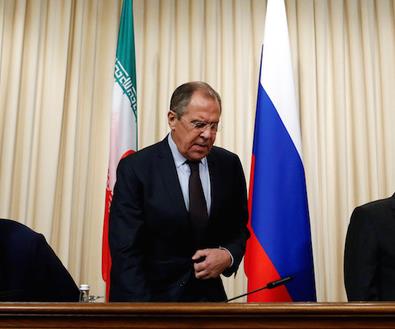 As the Islamic State (IS) has been in steady retreat, Iran and Russia are facing real difficulties sustaining their partnership. Each took advantage of the fight against IS to further its military campaign in Syria.
As the Islamic State (IS) has been in steady retreat, Iran and Russia are facing real difficulties sustaining their partnership. Each took advantage of the fight against IS to further its military campaign in Syria.
In July, US President Donald Trump and Russian President Vladimir Putin agreed on the sidelines of the G-20 summit in Hamburg to establish a cease-fire in southwestern Syria, in the Daraa, Quneitra and Suwayda provinces, which virtually annulled the terms established at Astana of creating a southern de-escalation zone. The latter included Suwayda rather than Daraa and Quneitra. According to some sources, the US-Russia deal demands that pro-Iranian forces pull back at least 40 kilometers (25 miles) from the Israeli-Jordanian border, with Russia’s military police deployed on the ground. In the region, Moscow seeks to garner the support of the local population, even seeking to form loyal militias.
The separate agreement signed in Cairo between Russia and Islamist opposition faction Jaish al-Islam made it possible for Russian troops to run checkpoints in eastern Ghouta — an interesting development given that Turkey had officially stated in June that Russia and Iran would deploy forces to the Damascus area to monitor the cease-fire. It is hard to discern whether Russia has unilaterally revised the scenario developed by the Moscow, Tehran and Ankara working groups. However, a revision is definitely implied by Russia’s efforts to gain control of the situation in the Damascus region, where Assad’s forces and Iran-backed militias have tried different strategies to recapture opposition-held territories.
To be clear, conceptually, the zones were negotiated in Astana with Russia, Iran and Turkey as the main mediators. However, subsequent talks about the zones’ details have often altered or annulled those agreements.
Such steps raise Tehran’s fears that informal negotiating platforms are gradually replacing the Astana process. Therefore, Syria and Iran have been trying to reset at the very least the Cairo agreement inked beyond the Astana format. For instance, the Syrian Arab Army's elite 42nd Brigade of the 4th Mechanized Division has been deployed to the Jobar region, which Russia had included in the de-escalation zone. Moreover, both Damascus and Tehran are compelling Faylaq al-Rahman to leave the area along with Hayat Tahrir al-Sham (HTS). Presumably, Syria and Iran aim to exclude Faylaq al-Rahman’s several thousand militiamen from the above-mentioned deal, likening them to al-Qaeda-affiliated HTS extremists and undermining the opposition’s military capabilities in eastern Ghouta.
Since the start of the political and diplomatic conflict over Syria’s future, the Russian-Iranian partnership has been deteriorating into a rivalry, with Tehran impeding the creation of conditions for conflict resolution. At the same time, Moscow’s strategy directly depends on the permanent presence of numerous pro-Iranian forces controlling different parts of the front line.
Since Russia launched military operations in Syria in 2015, marking its “comeback” in the Middle East, Moscow has regarded Iran as a reliable partner. However, the Russian leadership, whether deliberately or not, has found counterbalances to distance itself from Shiite-led Iran. An Israeli-Russian accord allowing the Israeli air force considerable latitude in targeting Hezbollah in Syria emerged as the first counterbalance, which undoubtedly raised Tehran’s ire. The second counterbalance was probably Moscow's attempt to cultivate relations with the Gulf’s Arab monarchies through a set of stick-and-carrot policies as it sought to take advantage of the indecisiveness of the administration of former US President Barack Obama, especially during the lame-duck period. The third counterbalance emerged when Trump made his way to the White House and declared his willingness to restrain Iran and his commitment to backing the allied Sunni monarchies.
Hence, Russia should preserve and maintain communication channels with the United States on Syria. Unlike the earlier period, when the interaction aimed to ensure Russian troops' security, today’s task is to constrain Damascus’ and Tehran’s desire for reprisals and find a political solution to the Syrian conflict. Russia has taken several steps toward decreasing Iran’s influence: deploying military police in eastern Aleppo, establishing the de-escalation zone, and supplying weapons and equipment to prop up forces and increase the effectiveness of the 5th Assault Corps under Russian Lt. Gen. Sergey Sevryukov.
A Russian military intelligence source told Al-Monitor on condition of anonymity that since eastern Aleppo was recaptured by Assad's troops, Russia and Iran have been fiercely vying for regional dominance.
“Prior to the military operation, Moscow tried to establish relations with local elders through the mediation of Russian officers, natives of the North Caucasus region. But the ties were later severed, and as a result, Russian bombs rained down on eastern Aleppo. Then these contacts had to be re-established. At present, the work that Russian officers from the North Caucasus have done in east Aleppo has been considered fruitful, as it allows at least limiting Iranian regional influence.”
Since eastern Aleppo was seized, Russia has definitely increased its sway over the region. Russia turned the tide of war and helped the regime survive. However, over the war years, Tehran has gained momentum and built up a multi-layer presence in Syria that includes local Shiite militants.
These groups include Syrian units, offshoots of the Lebanese National Ideological Resistance in Syria and Syrian Islamic Resistance groups (sometimes called Iraqi Hezbollah), the units of the Local Defense Forces in Aleppo and the National Defense Forces, comprising Alawites, Sunnis and other Syrians backed by Iranian military advisers and partially or fully funded by Iran. New Iranian cultural centers and Shiite propaganda among the locals are Tehran’s soft-power instruments. This strategy heightens ethnic and sectarian tensions in the region, which helps spread IS and HTS propaganda.
The rise of HTS in rebel-controlled Idlib province and the use of delaying tactics in the negotiations play into the hands of Damascus and Tehran, which need a protracted military campaign to regain losses. They blame opposition groups for their ostensible loyalty to al-Qaeda. The Syrian government’s offensive to retake Idlib is a negative scenario for Russia and Turkey. Rebel forces will apparently rally to fight the common enemy. New coalitions will emerge among the moderate and radical opposition. Ultimately, the process will strengthen al-Qaeda's position in Syria and trigger a new humanitarian and refugee crisis. Obviously, under such circumstances, the advancing troops will also suffer heavy casualties. That's why Damascus and Iran will try to drag Russia into this new round of war.
Should the situation escalate, the Kremlin would tolerate the deployment of Turkish troops.
If the United States is genuinely intent on destroying the Iranian corridor — a piece of land carved through Syria that ultimately links Tehran through Iraq with the Mediterranean coast — Moscow and Washington will probably have something to talk about, albeit unofficially.
Photo credit: REUTERS/Sergei Karpukhin
Article published in Al Monitor: http://www.al-monitor.com/pulse/originals/2017/08/russia-relationship-iran-syria-military-situation-moscow.html
The “Southern Deal” Between Moscow and Washington: A Duel of Diplomacies
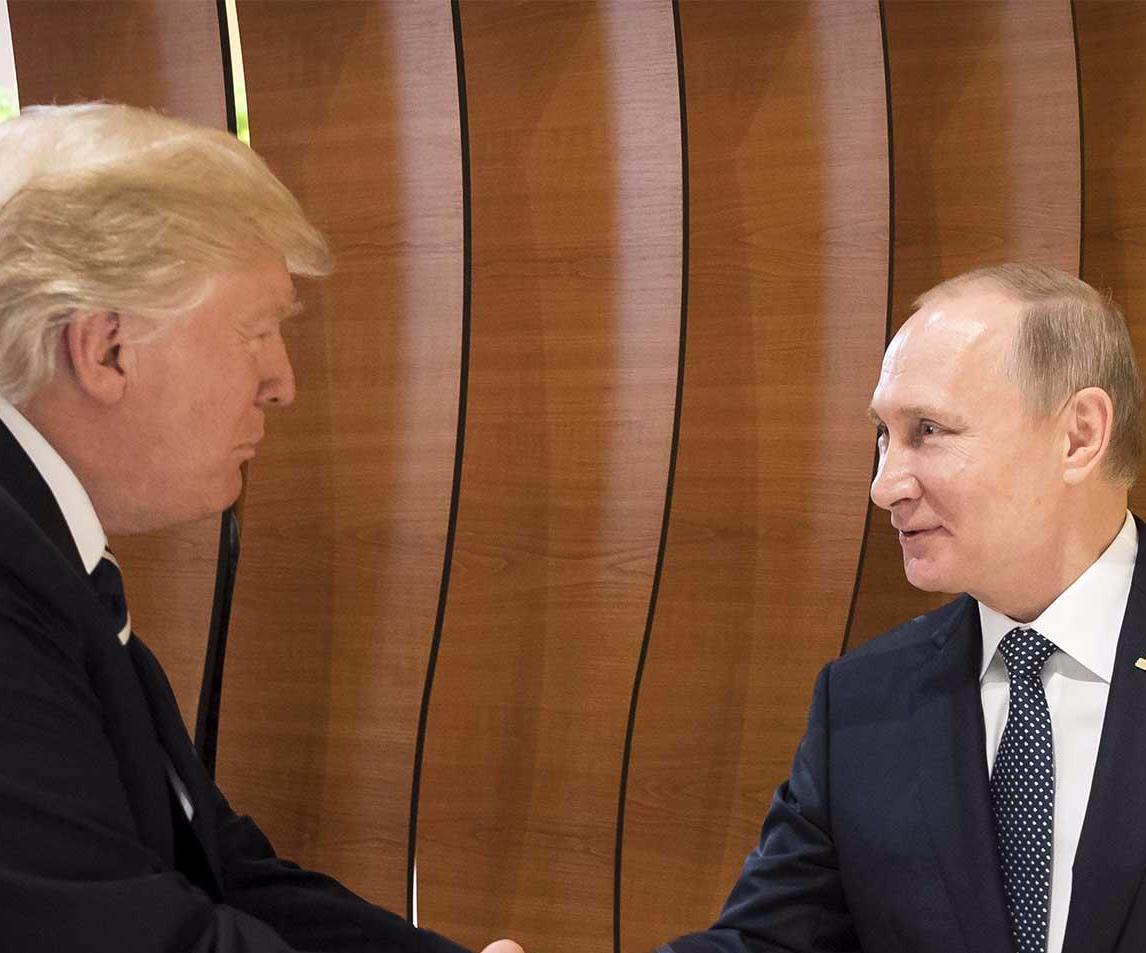 The main result of the meeting between Russian President Vladimir Putin and his American counterpart, Donald Trump, on the sidelines of the G20 summit in Hamburg on 7 July 2017 was a ceasefire agreement for a de-escalation zone in the governorates of Daraa, Quneitra and As-Suwayda in southwest Syria and on setting up a ceasefire monitoring center in Amman.
The main result of the meeting between Russian President Vladimir Putin and his American counterpart, Donald Trump, on the sidelines of the G20 summit in Hamburg on 7 July 2017 was a ceasefire agreement for a de-escalation zone in the governorates of Daraa, Quneitra and As-Suwayda in southwest Syria and on setting up a ceasefire monitoring center in Amman.
The United State's involvement in the multilateral Syrian settlement format marks an important new milestone in this process. American, Jordanian and, unofficially, Israeli participation in the settlement process allows for inclusion in the negotiations of the American-aligned Syrian Democratic Forces (SDF) and groups of the Free Syrian Army (FSA) in As-Suweyda and the Syrian Desert, as well as pro-Jordanian factions on the Southern Front, which refused to send their delegations to the fifth round of the Astana process. This achievement could potentially help preserve Syria's territorial integrity and include in the peace process all Syrian forces that are inclined to engage with other states diplomatically, and the territories they control, without any exceptions.
It should be noted that reports about a certain planned de-escalation zone with US participation in the south of Syria surfaced long before the meeting between the Russian and American presidents. For example, on 6 June 2017, commenting on the airstrike on a convoy of Syrian government forces travelling towards the Al Tanf border crossing, the Pentagon noted that the pro-government forces had entered a “coordinated de-escalation zone”. Simultaneously, reports started coming in (at that time still without official confirmation) about Russian-US consultations in Amman on one or several de-escalation zones. At the same time, experts began questioning the compatibility of the possible agreement for southern Syria with the memorandum passed in Astana in May. Even after the official rollout of the zone on the sidelines of the G20 summit and after the ceasefire came into effect on 9 July, these questions have not yet been fully answered.
Scenario one
The United State's involvement in the multilateral Syrian settlement format marks an important new milestone in this process.
The United States and Russia expand the southern de-escalation zone originally agreed upon in Astana to cover the As-Suwayda Governorate and also, unofficially, the opposition enclave in Eastern Qalamoun and territories in the Syrian Desert, including those around the population centre of Al-Tanf, which accommodates detachments of the local Sunni tribes from Revolution Commando, supported by American, British, Norwegian and Jordanian special operations forces. At the same time, Washington and Amman will not be promoted to full members of the Astana format and guarantor countries. Iran and Turkey, for their part, will retain their status as guarantor countries in this southern zone, in accordance with the Astana agreements.
The newly included territories are not mentioned in the Astana memorandum on de-escalation zones but let us not forget that reports from those areas have repeatedly caused public repercussions in the past. To begin with, the United States decided against raising the level of confrontation in the east by attacking the pro-government forces that, instead of advancing in the direction of the pro-US units, formally announced their intention to fight against the Islamic State (while, on the other hand, creating a “Shiite corridor” into Iraq). Also, in parallel with these incidents, unofficial talks in Amman continued. Furthermore, it appears that the parties were interested in what such an agreement has to offer.
Scenario two
The United States and Russia officially expanded the southern de-escalation zone identified in Astana by involving external players that are instumental in Syria's southern regions, namely Jordan and, informally, Israel. If were to happen, then Washington and possibly Amman would effectively become full participants in the Astana talks. Such a development could be regarded as an undoubted success of both Russian and American diplomacy: Moscow made Washington shoulder the responsibility for the actions of the Syrian opposition, while Washington, for its part, forced Moscow to influence Damascus and Iran, which is an extremely difficult task. The Russian media prefer not to mention it, but it is in the best interests of the Al-Assad government and the Iranians, whose clout in Syria depends directly on survival of the current Syrian regime, to discredit the entire opposition without exception.
Scenario three
What the United States and Russia did was “reset” the format of the southern de-escalation zone as defined in Astana. In particular, this is the scenario at which Associated Press sources hinted when saying that the current agreement between the United States and Russia has nothing to do with the Astana memorandum.
It is possible that, following the creation of the southern de-escalation zones and the security zone, with the USA among the guarantor nations, creation of similar de-escalation zones elsewhere in Syria will be discussed or is, indeed, already being discussed.
Since February 2017, pro-government forces have been conducting active operations in the governorates of Daraa and Quneitra not just against Tahrir al Sham, but also against the aforementioned Southern Front coalition of FSA groups, which enjoys the support of Jordan's Military Operations Center. Following the inclusion of these governorates in the de-escalation zones identified by the Astana memorandum, there was no cessation of hostilities as there were in other regions incorporated into the ceasefire agreement. In other words, there has been no actual de-escalation in those provinces, so the format of a “zone” including them has been declared untenable. This third scenario appears to be the most probable. It also opens up additional opportunities for replicating such zones in other Syrian regions. It is possible that, following the creation of the southern de-escalation zones and the security zone (the latter implies a certain buffer separating the opposition from the pro-government forces), with the USA among the guarantor nations, creation of similar de-escalation zones elsewhere in Syria will be discussed or is, indeed, already being discussed. This possibility has been voiced by certain US experts.
Tehran is concerned about the Amman consultations, fearing that the Jordanian negotiating format should gradually begin to replace the Astana process.
As mentioned above, it would be logical to set up such zones in the north/northeast of Syria, on the territories controlled by the SDF. Long-term US military presence has already been secured in those parts in the form of a network of US military bases. In addition, despite the fierce resistance on the part of the Islamic State, the fate of that movement's informal capital city Raqqa is all but sealed.
Therefore, the talk concerns the need for proactive measures aimed at configuring security zones in the northeast of Syria, with delimitation boundaries drawn beforehand for the Al-Assad and SDF forces advancing on the Islamic State from opposite directions. This would help avoid incidents and armed clashes. The Ankara factor is also important here: Turkey's position is understood to be aimed exclusively against any legalization of the SDF alliance, which Ankara perceives as a cover for the Kurdistan Workers' Party.
Iran's position
The greatest problems with implementing any scenarios involving the United States in the Syrian settlement could come – indeed, have apparently long been coming – from Iran, and from the part of the Syrian leadership in Damascus which relies on that country.
Tehran is known to have stated in the past that it opposes both the United States’ participation in the Astana talksand an American presence in any of the de-escalation zones. Washington's current stance with regard to Tehran similarly rules out any interaction with Iran and its allies (for the exception of Iraq) in regards to the Syrian settlement. This makes a situation when representatives of the two countries would sit down at the negotiation table as equal partners virtually impossible. During the first round of the Astana talks, while giving an overall positive appraisal of the format, the American Department of State expressed its bewilderment at Iran's participation.
According to some reports, the United States and Jordan insist on all pro-Iranian Shiite forces being pulled out from those regions in southern Syria, which are planned to become part of the de-escalation zone. Israel supports this position: Tel Aviv has repeatedly delivered strikes in the past on Shiite forces supporting Al-Assad in southern Syria. Sources point out that Tehran is concerned about the Amman consultations, fearing that the Jordanian negotiating format should gradually begin to replace the Astana process. Iran appears to be particularly worried that the current list of guarantor countries in the Syrian settlement process could begin to change over time, with Tehran being driven out of the country. On the other hand, since the beginning of Syrian warfare Tehran has set up multi-layered presence in the country: it relies not only on the numerous Shiite multinational communities and Islamic Revolutionary Guard Corps specialists, but also on the local National Defense Forces and the unofficial units of the Syrian Hezbollah chapter.
Russia could be accused of aiming all its reconciliation initiatives as a smokescreen in support of the revanchist sentiments harbored by Iran and by the “party of war” in Damascus.
Tehran, therefore, is apparently demonstrating its unwillingness to recognize any agreements regarding Syria to be concluded without its participation. Washington and the Gulf countries had anticipated such behaviour from Iran and the groups it controls. For Moscow, this development is fraught with complications. Russia could be accused of aiming all its reconciliation initiatives as a smokescreen in support of the revanchist sentiments harbored by Iran and by the “party of war” in Damascus. The implications of such an accusation cannot be ignored.
Despite the fact that the agreement between the United States and Russia officially came into being on 9 July, there is so far no clarity as to what it actually entails. There remain questions as to how the ceasefire in the south of Syria will be monitored, what the parties' positions are on Iran's involvement, and how the fight on the radicals will be carried out in a way that would not affect the “healthy” part of the opposition. Hypothetically, under a sustained ceasefire the opposition itself would be prepared to fight terrorist units. The main thing is for all the parties to strive for a sustained ceasefire regime and for a peaceful settlement of the conflict. For as long as such uncertainties exist, the ceasefire will continue to be violated.
Article by Anton Mardasov and Kirill Semenov
Article published in RIAC: http://russiancouncil.ru/en/analytics-and-comments/analytics/the-southern-deal-between-moscow-and-washington-a-duel-of-diplomacies/
Photo credit: picture alliance
The Kremlin’s contradictory behavior in Syria
 The Kremlin is seeking to flesh out the idea of creating four de-escalation ("safe") zones in western war-torn Syria while trying to help President Bashar al-Assad regain control of lost territories in the east. When it comes to the west, Moscow is talking about the de facto end of the civil war and aims to covertly weaken the Syrian opposition. As for eastern Syria, Russia is trying hard, though discreetly, to distance itself from the US-Iranian confrontation and preserve communication channels with Washington. It is also advocating decreasing the influence of both the United States and Kurds and urging pro-Kremlin oligarchs to help fix the economy.
The Kremlin is seeking to flesh out the idea of creating four de-escalation ("safe") zones in western war-torn Syria while trying to help President Bashar al-Assad regain control of lost territories in the east. When it comes to the west, Moscow is talking about the de facto end of the civil war and aims to covertly weaken the Syrian opposition. As for eastern Syria, Russia is trying hard, though discreetly, to distance itself from the US-Iranian confrontation and preserve communication channels with Washington. It is also advocating decreasing the influence of both the United States and Kurds and urging pro-Kremlin oligarchs to help fix the economy.
Russia's policy in Syria seems successful, and that appearance is meant to impress the Russian population ahead of the 2018 presidential election. In reality, however, Moscow is confronted with a range of problems as it proceeds with its purely tactical plans. Syrian government troops continue fighting in Daraa province, and the Southern Front — the rebel alliance that until recently had hardly opposed the regime — boycotted the fifth round of negotiations in Astana, Kazakhstan, which resumed July 4.
Some Russian analysts, referencing their sources in the Ministry of Foreign Affairs and Ministry of Defense, argue that Russian military and political leaders are well aware that Iran and Assad intend to prevent the UN's peace plan from succeeding. (The UN Security Council unanimously adopted the plan, Resolution 2254, in late 2015.) The analysts worry that Tehran and Damascus might try to convince Moscow to not cooperate as well.
Russia openly stands by its allies. For instance, to justify the Syrian government’s blocking of Tabqa, Moscow went so far as to accuse the United States and the Kurds allied with the Syrian Democratic Forces (SDF) of colluding with the Islamic State (IS). Moreover, Russia has warned that it will target US planes flying west of the Euphrates — though US aircraft hardly ever operate there anyway.
One of the weakest points of Russia’s de-escalation zone plan is the problem of how to fight radical forces if Assad would have to launch an offensive through territory controlled by moderate opposition, given that Assad and moderates have signed a truce. The exacerbation of relations between the Kurds and Assad’s forces will give Turkey more leeway regarding Idlib, positioned deep in enclaves controlled by the radical opposition alliance Hayat Tahrir al-Sham (HTS). Yet such exacerbation would discourage new players from engaging in the peace settlement, which the Kremlin would have welcomed.
Turkey is dissatisfied with the outcome of Operation Euphrates Shield. Ankara was only able to secure an area of 2,015 square kilometers (778 square miles) in northern Aleppo — half the planned area of 5,000 square kilometers (1,931 square miles). The operation also failed to dissuade the new US administration from relying on the Kurdish People's Protection Units (YPG) during the storming of Raqqa. During the Astana talks, Ankara insisted on extending the northern de-escalation zone not only to Idlib province, but also to the adjacent, opposition-held territories in Latakia, Aleppo and Hama. Turkey sees these territories as areas of its potential influence, given that local populations and moderate militant groups there are cooperating with the Turks.
A source close to Russian intelligence services told Al-Monitor on condition of anonymity that Moscow has considered two options for Idlib. The first was to back the advancement of pro-Assad forces, which would inevitably trigger escalation, drag Russia further into the Syrian conflict, and affect its foreign policy, economy and internal security. The second option implies close cooperation with Turkey. Ankara is reluctant to welcome new Syrian refugees to its territory, still, it is ready to send its special forces to support the "moderate" rebel groups against HTS in exchange for concessions related to Syrian Kurds.
In Syria's east, the race to maximize territorial gains creates favorable conditions between Damascus and Ankara. Both have difficult relations with the Kurds and could find common ground by cooperating against them.
After the US downing of the Su-22 that allegedly attacked the SDF, the al-Muatasim Brigade — a faction of the Turkey-supported Free Syrian Army, — withdrew from talks with the SDF about al-Muatasim taking over control of 11 villages from the Kurds. Moreover, Assad's troops closed off the Aleppo-Afrin road, while Turkey started redeploying its troops and equipment south and west of Azaz for an offensive against the Kurdistan Workers Party (PKK) in Tell Rifaat and Afrin.
A source in the Russian Defense Ministry confirmed for Al-Monitor that Moscow and Ankara have coordinated a joint offensive designed to allow Turkey to achieve two goals: weaken the US-supported, Kurdish nationalist Democratic Union Party (PYD), an offshoot of the Kurdistan PKK; and gain a sufficient foothold for further peacekeeping activities against HTS, which isn't a party to the truce.
“The preliminary agreement implies that a small group of Russian military advisers will stay in Afrin to act as an intermediary between the Kurds and Assad. In its turn, Turkey will gain control of the sites it deems vital,” the source said.
However, it was uncertain whether the agreement addressed 41 PYD/PKK facilities in northern Aleppo province and provided for a corridor from Azaz to Idlib. A corridor would link Turkey's zone of influence north of Aleppo with opposition enclaves in Idlib, which could weaken the Kurds and make them more cooperative with Russia and Assad.
"Moscow is keen to secure Kurdish loyalty to Damascus, and in a way would want to punish Kurds for prioritizing relations with the US over dealings with Syrian and Russian military. But it equally opposes fighting across the entire Afrin canton," the source added.
Ankara is aiming to control only the eastern and southern parts of Afrin canton, to link Idlib with the area recovered during Operation Euphrates Shield. However, the Kurds say Turkey wants to control all of the Afrin canton. If they halt the offensive on the IS stronghold of Raqqa to shift troops to Afrin, that action "could bring about heavy civilian casualties and trigger a tough US response,” the source said.
In theory, Turkish troops can't join the operation against the HTS if they are deployed in the safety zone in Idlib. If they were stretched thin trying to do both, the troops would be easy prey for radical groups. Al-Monitor sources in Turkey close to military officials say Ankara is considering establishing several military facilities in Idlib. Turkey would be backed by the opposition troops that previously engaged in Operation Euphrates Shield.
A joint Turkish-Russian military group reportedly has deployed to Sheikh Barakat Mountain on the border of Idlib province. Turkish troops may access Idlib from two areas — either from the border village of Atma to the town of Darat Izza and Sheikh Barakat Mountain west of Aleppo, or through Salqin and Harem. Moscow has no choice but to rely on Turkey in terms of separating opposition groups, which may presuppose the military crackdown on notorious jihadists, as well as lure some non-al-Qaeda groups to join Ahrar al-Sham. Such attempts have been made already, and as the pressure over the HTS continues, some of its fighters may want to join other “moderate” groups.
However, such complicated scenarios — currently, diverse HTS units control about 80 out of 156 local councils in Idlib — with an ill-conceived cease-fire mechanism undermine Moscow’s peacekeeping efforts to involve its closest allies from among post-Soviet states: Kazakhstan and Kyrgyzstan.
On June 22, Vladimir Shamanov, the head of Russia's State Duma Defense Committee, said proposals were being worked out for Kazakhstan and Kyrgyzstan, Russia’s allies in the Collective Security Treaty Organization (CSTO), to join the military campaign in Syria. The next day, authorities of both states denied reports about the negotiations. A similar proposal was made to Armenia, whose security forces have long conducted undercover operations in Syria to protect Armenian ethnic enclaves. The Armenian forces accumulated considerable experience in peacekeeping in Iraq, Kosovo, Afghanistan and Lebanon. “Kazakhstan’s peacekeeping battalion took part in minesweeping in Iraq. Even though Astana has used a multifaceted approach and spared no effort to be perceived as a reliable mediator, it can be forced to deploy a small military contingent. Kyrgyzstan can be compelled to follow suit, as Russia has recently written off [Kyrgystan's] new debts,” an official from the Russian military-industrial complex told Al-Monitor.
In sum, it’s possible that if there's a flare-up between the Kurds and Damascus, Turkey may make the most of the situation and take its own actions, reneging on its agreements with Moscow. In turn, Russia may convince CSTO allies of the need to send troops to Syria — even though it won’t be easy.
That said, however, Russia’s position on the Kurds isn’t linear. Moscow doesn’t strictly oppose a Turkish operation as Turkey's way to make the Kurds pay for their dealings with Washington. Yet the presence of Russian forces in Afrin is still supposed to be a formal demonstration of defending the Kurds, even though the Russian forces won’t hamper Turkey’s offensive. However, there’s a serious risk that outside interference into Idlib will create new alliances in the opposition, not their separation into “moderate” and “radical” factions.
Article published in Al Monitor: http://www.al-monitor.com/pulse/originals/2017/07/russia-behavior-syria-turkey-idlib-military-base.html
Photo credit: REUTERS/Omar Sanadiki
Вопросы к соглашению России и США по югу Сирии
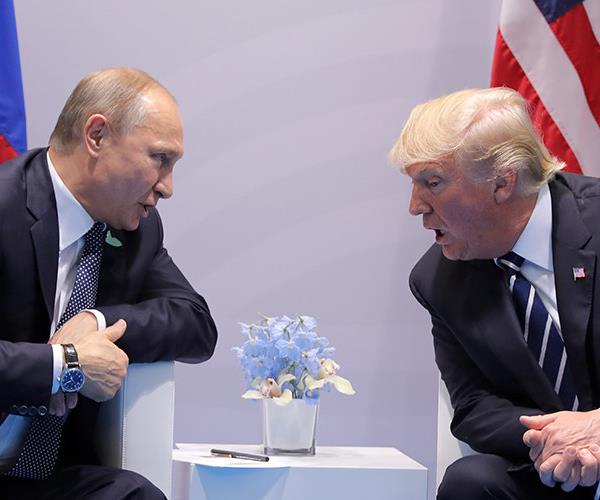 Одним из главных публичных итогов встречи президента России Владимира Путина и его американского коллеги Дональда Трампа стало соглашение о прекращении огня на юго-западе Сирии в провинциях Дераа, Кунейтра, Сувейда и о создании в Аммане центра мониторинга соблюдения режима прекращения огня. Как позже заметил глава российского внешнеполитического ведомства Сергей Лавров, «три другие зоны деэскалации, дискуссии по которым продолжаются в рамках астанинского процесса, также достаточно актуальны».
Одним из главных публичных итогов встречи президента России Владимира Путина и его американского коллеги Дональда Трампа стало соглашение о прекращении огня на юго-западе Сирии в провинциях Дераа, Кунейтра, Сувейда и о создании в Аммане центра мониторинга соблюдения режима прекращения огня. Как позже заметил глава российского внешнеполитического ведомства Сергей Лавров, «три другие зоны деэскалации, дискуссии по которым продолжаются в рамках астанинского процесса, также достаточно актуальны».
Мировые средства массовой информации районы на юго-западе, за режим прекращения огня в которых с 9 июля стороны взяли на себя ответственность, часто называют «новой зоной деэскалации». Верно это утверждение или нет – вопрос на самом деле неоднозначный.
Агентство Associated Press со ссылкой на свои источники первым сообщило о достигнутом соглашении между Москвой и Вашингтоном. Журналисты отметили, что эта договоренность знаменует новый уровень участия президента США Дональда Трампа в попытке разрешить гражданскую войну в Сирии. Однако, по их информации, данная сделка никак не относится к меморандуму о создании зон деэскалации в Сирии, подписанному Ираном, Россией и Турцией в Астане в мае 2017 года.
Учитывая, что в астанинском меморандуме фигурировали только две провинции - Дераа и Кунейтра, мы можем предположить несколько вариантов логики соглашения.
Итак, первый сценарий: США и Россия признали невозможным функционирование обозначенной в Астане южной зоны деэскалации на прежних условиях. Скажем, в последние месяцы там шли активные боевые действия с участием проправительственных формирований и оппозиции Сирийской свободной армии из коалиции «Южный фронт». Собственно, это и послужило причиной того, что 34 командира подписали заявление о бойкоте пятого раунда Астаны. «Южный фронт» опирается на поддержку иорданского MOC (The Military Operations Center), что самом по себе исключает присутствие в рядах коалиции отрядов «Исламского государства» и Hay'at Tahrir al-Sham (HTS).
Сценарий второй: США и Россия расширили южную зону деэскалации, обозначенную в Астане, подключив к договорённостям Израиль и Иорданию. В таком случае Вашингтон фактически становится участником астанинского процесса, что является несомненным успехом российской дипломатии в плане закрепления за Соединенными Штатами ответственности по влиянию на оппозицию. В свою очередь американцы с союзниками таким образом проверяют способность России оказывать влияние на Дамаск и Иран, которые для дискредитации оппозиции могут подыграть Jaysh Khalid ibn al-Waleed, отделению «Исламского государства», и HTS, которые так или иначе будут инициировать наступление для срыва перемирия. Турция не имеет ни влияния, ни интересов на юге Сирии (в отличие от двух зон – в провинции Идлибе и примыкающих к ней территорий Латакии, Алеппо и Хамы и «Растанском котле»), и, соответственно, не может выступать гарантом перемирия или отстаивать интересы тамошней оппозиции.
И наконец, третий сценарий: США и Россия расширили южную зону деэскалации, обозначенную в Астане, подключив к договорённостям Израиль и Иорданию, но при этом негласно под провинцией Сувейда понимается еще и территория Сирийской пустыни. Анклав оппозиции в Восточном Каламуне и территория вокруг населенного пункта ат-Танф, где дислоцированы отряды местных суннитских племен из Revolution Commando, поддерживаемых спецназом США, Великобритании и Норвегии, не входят в какую-либо зону деэскалации. Напомним, что в районе Сирийской пустыни ВВС США дважды сбивали иранские ударно-разведывательными беспилотниками Shahed-129 и несколько раз атаковали проиранские формирования, продвигающиеся к ат-Танфу. В итоге оппозиция возле ат-Танфа оказалась заблокирована проправительственными силами и потеряла возможность двигаться к занимаемому ИГ Аль-Букамалю в провинции Дейр эз-Зор. При этом теоретически Revolution Commando, поддерживаемый спецназом, мог продолжить движение на восток и миновать в пустыне позиции иранских прокси-сил, однако американцы отказались от этого решения. Во-первых, в такой конфигурации сил у них, по сути, не было повода атаковать проправительственные формирования, которые не продвигались в сторону проамериканских отрядов, а формально нацелились на борьбу с ИГ (хотя и создали «шиитский коридор» в Ирак). Во-вторых, не секрет, что параллельно с развитием американо-иранского противостояния на юго-востоке Сирии между Россией и США в Иордании велся диалог о деконфликтации пространства. По данным дипломатических источников, очередной раунд таких переговоров в Аммане состоялся буквально накануне недавней и первой встречи Владимира Путина и Дональда Трампа в Гамбурге.
И хотя рассматривается вариант переброски части подразделений Revolution Commando в район Шаддади (Хасака) для усиления арабского компонента коалиции «Демократические силы Сирии», однако оппозиция все равно сохранит свое присутствие на границе с Иорданией. Американцам это необходимо для отслеживания ситуации на сирийско-иракской границе как в плане контроля за перемещением проиранских отрядов, так и радикальных элементов: потому что район границы с ее тоннелями важен боевикам «Исламского государства» для их выживания в Сирии и Ираке после потери крупных населённых пунктов.
Другое дело, что, по словам Сергей Лаврова, в новом документе о создании зоны деэскалации на сирийской территории «четко подтверждена приверженность России, Иордании и Соединенных Штатов суверенитету и территориальной целостности Сирийской Арабской Республики и резолюциям СБ ООН, которые заложили основу для продвижения политического урегулирования». Таким образом Москва и Вашингтон вряд ли бы стали объявлять территорию Сирийской пустыни отдельной зоной деэскалации, чтобы не провоцировать разговоры о разделении страны. Почему в южную зону помимо Сувейды официально не были добавлены участки Сирийской пустыни в Дамаске и Хомсе? Возможно, это связано с неопределенным статусом этих территорий и большим иранским влиянием.
Так, несмотря на объявленные и официально вступившие в силу с 9 июля соглашение США и Россией, пока не ясно: что оно собой представляет, каким образом на юге Сирии будет отслеживаться перемирие, а главное - осуществляться борьба с радикалами. Гипотетически при устойчивом перемирии оппозиции сама готова бороться с отрядами террористической направленности, главное – чтобы все стороны стремились поддерживать режим прекращения огня и были нацелены на политическое урегулирование конфликта.
Photo credit: Carlos Barria / Reuters
Как связаны новая сирийская операция Турции и пятый раунд Астаны
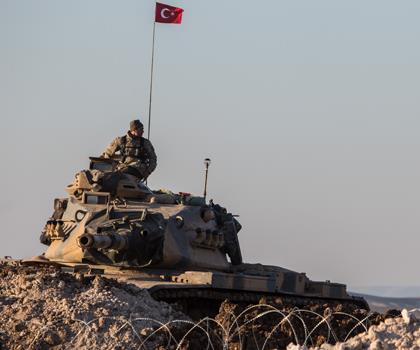 Президент Турции Реджеп Тайип Эрдоган 2 июля встретился с российским министром обороны Сергеем Шойгу в резиденции Тарабья в Стамбуле. Об этом сообщил официальный сайт турецкого президента. Подробности переговоров не уточняются, но согласно фото, предоставленном президентской канцелярией, на них присутствовали также глава Генштаба ВС Турции Хулуси Акар и руководитель Национальной разведывательной организации (MIT) Турции Хакан Фидан. Встреча прошла перед пятым раундом сирийских переговоров в Астане и началом обещанной президентом Эрдоганом новой операции Анкары в Сирии.
Президент Турции Реджеп Тайип Эрдоган 2 июля встретился с российским министром обороны Сергеем Шойгу в резиденции Тарабья в Стамбуле. Об этом сообщил официальный сайт турецкого президента. Подробности переговоров не уточняются, но согласно фото, предоставленном президентской канцелярией, на них присутствовали также глава Генштаба ВС Турции Хулуси Акар и руководитель Национальной разведывательной организации (MIT) Турции Хакан Фидан. Встреча прошла перед пятым раундом сирийских переговоров в Астане и началом обещанной президентом Эрдоганом новой операции Анкары в Сирии.
Турецкие СМИ и эксперты публикуют огромное количество материалов с подробностями предстоящих действий: якобы операция будет носить название «Меч Евфрата», начнется в июле-августе, продлиться ориентировочно 70 дней и будет проводиться силами оппозиции и турецких военных. По ее итогам Анкара надеется «изолировать» и «стабилизировать район» курдского кантона Африн на северо-западе провинции Алеппо. В свою очередь, курды обвиняют турок в намерении сорвать операцию по освобождению Ракки и обещают сдержать любую агрессию в отношении курдских анклавов, в том числе в Африне. Гражданский совет Ракки (особенность действий «Демократических сил Сирии состоит в том, что альянс формирует совет по управлению освобождаемой территории, чтобы после ликвидации в том или ином городе сразу приступить к самоуправлению) уже выпустил заявление, в котором призывает воздержаться от атаки в районе курдского Африна, поскольку это может сорвать кампанию SDF против «Исламского государства» *. А местная администрация курдского кантона Африн начала кампанию в социальных сетях, поддерживаемую курдскими активистами под хештэгом #TurkeyhandsoffAfrin, призывая международное сообщество прекратить наступление Турции на Африн.
В этой связи особый интерес представляют действия России и ее контакты с турецким руководством (как афишируемые, так и не афишируемые). Известно, что в марте в Африне было развернуто отделение российского Центра примирения враждующих сторон. На фоне разговоров о новой операции в Сирии в СМИ и соцсетях поступает много противоречащих друг другу сообщений, причем нередко от одних и тех же сирийских, курдских и турецких источников: сначала они писали о том, что здание отделения практически пустует и в Африне осталось 10 российских военнослужащих, потом сообщали о прибытии туда 160 военных. Так или иначе, российские военнослужащие в Африне есть, и этот факт интерпретируется в прессе в двух плоскостях: первая - Москва не сдаст курдов Анкаре, вторая - Москва пытается таким образом склонить курдов к сотрудничеству с Дамаском.
И все-таки представляется, что российская позиция здесь не прямолинейна: Москва не против наказать курдов за их однозначный дрейф в сторону Вашингтона и дать «зеленый свет» для турецкой операции, однако нахождение военного контингента в Африне формально выглядит как демонстрация защиты курдов, при том, что он не повлияет на наступление протурецких сил. Поясним. Хотя курды заявляют, что турки нацелились на штурм всего кантона, турецкие СМИ и эксперты уточняют, что речь идет только об изоляции Африна, ликвидации 41 объекта подразделений YPG — боевого крыла партии «Демократический союз», связанного с Рабочей партией Курдистана. По сути, речь идет о взятии под контроль города Тель-Рифат и еще 10 населенных пунктов, то есть юго-восточных предместий Африна с последующим созданием сообщения между Идлибом и турецкой зоной влияния, образованной по итогам операции «Щит Евфрата». При этом, во-первых, отделение российского центра примирения сторон находится в стороне от этих населенных пунктов, во-вторых, турецкое усиление на границе Алеппо и Идлиба, скорее всего, будет напрямую увязано с Астанинским меморандумом о зонах деэскалации.
Дело в том, что решение проблемы Идлиба – то есть борьба с радикальным альянсом «Хайат Тахрир аш-Шам» (ХТШ) - одно из главных проблемных звеньев во всей концепции зон деэскалации (хотя по убеждению автора предложенные зоны деэскалации – это калька с давно разработанных американских зон безопасности для одобрения их Вашингтоном, но с решающей ролью Москвы). ХТШ находится преимущественно в центре провинции. Продвижение туда армии Асада с иранскими прокси-силами привело бы к большим потерям среди проправительственных сил, хотя, откровенно говоря, ведение и затягивание боевых действий – это то, что нужно существующему режиму в Дамаске, который не хотел бы никаких изменений, предусмотренных резолюцией ООН №2254. В таком случае боевые действия велись бы против всей оппозиции без исключения. К слову, как сейчас происходит в провинции Дераа, где под легендой борьбы с «террористами» боевые действия ведутся против «Южного фронта», который по своей сути является оппозиционным Дамаску, но абсолютно не является радикальным. Это прекрасно знают в том же Дамаске, поскольку между правительственными силами и «Южным фронтом» долгое время действовало перемирие, из-за чего коалиции отрядов ССА даже были приостановлены поставки вооружений со стороны иорданского MOC (The Military Operations Center). Понятно, что такой сценарий спровоцировал бы сотни тысяч беженцев из перенаселенного Идлиба (численность населения провинции до войны превышала 1 млн человек, в настоящее время по данным Провинциального совета оценивается в 2-2,2 млн человек), при том, что Турция больше не готова их принимать на своей территории, а главное – спровоцировал укоренение радикальной «Аль-Каиды» и ее слияние с оппозиционными группами перед лицом общего противника, не говоря уже об общей эскалации ситуации и прямых последствиях для Москвы.
Альтернативный вариант – взаимодействие с Турцией, которая готова поддерживать оппозицию в ее борьбе с ХТШ рейдами своего спецназа. Таким образом Турция может войти в Идлиб со стороны турецкой границы из двух районов: либо через деревню Атма в город Дарат Изза и Джебель Баракат, либо через Салкин и Гарем, а также действовать из сформированной в результате операции «Меч Евфрата» буферной зоны. Среди турецких экспертов активно ходят слухи о том, что на холме Шейх Баракат (Идлиб) может быть размещен совместный российско-турецкий миротворческий гарнизон для контроля ситуации.
В описанном выше сценарии есть масса «но». К примеру: насколько Турция готова сохранять приверженность соглашениям, как поведут себя при проведении операции курды в Африне и курды в Ракке, и какова будет реакция США, если вдруг сорвется операция по борьбе с ИГ. При этом курды, как бы к ним не относились турки или те же арабы в SDF, - это ключевая цементирующая сила на пост-«халифатском» пространстве востока Сирии.
И только ленивый мог не заменить, что активация турок в Азазе, закрытие дороги в Африн правительственными силами и т.п. совпало со сбитым ВВС США сирийским Су-22, который, вопреки заявлениям Минобороны Сирии, наносил удары не по ИГ, а по позициям SDF. Тем не менее при внешней игре на публику Россия и США демонстрируют готовность решать проблемы негласно, как это было сделано в провинции Ракка, где демаркационная линия между позициями SDF и войсками Асада проведена по линии в районе селения Аль-Карама.
Казахстан и Киргизия в сирийских зонах деэскалации
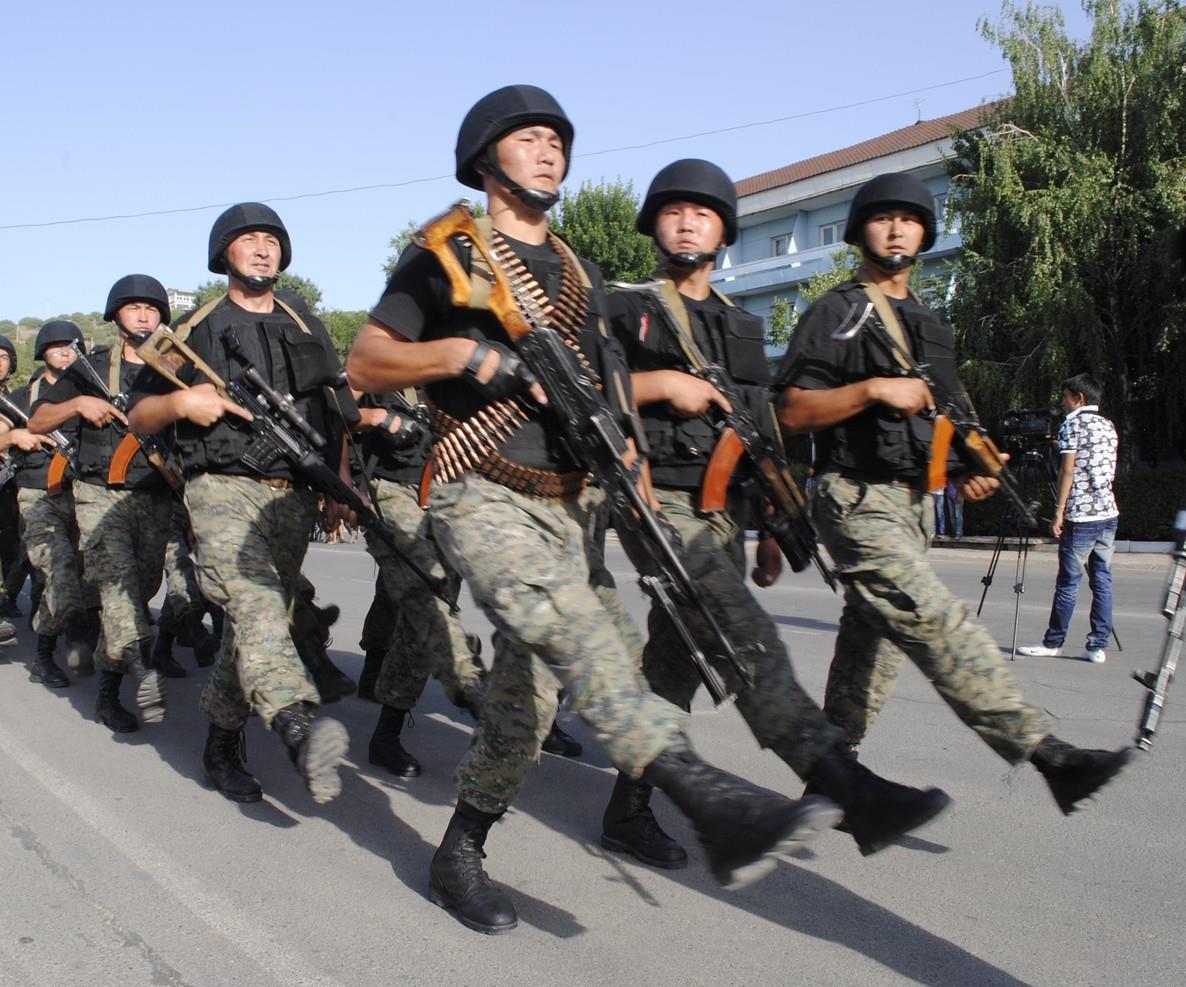 В Сирии могут быть размещены военные из Казахстана и Киргизии, сообщил 22 июня председатель комитета Госдумы по обороне, бывший командующий ВДВ генерал-полковник Владимир Шаманов. По его словам, подобные переговоры идут с Турцией, но пока они – из разряда планов и намерений. В свою очередь, представитель президента Турции Ибрагим Калын подтвердил, что привлечение участников ОДКБ к миротворческим задачам обсуждалось в ходе переговоров со спецпредставителем президента России по Сирии Александром Лаврентьевым. «Мы ожидаем, что на июльской встрече в Астане эти вопросы будут конкретно обсуждаться», — пояснил Калын.
В Сирии могут быть размещены военные из Казахстана и Киргизии, сообщил 22 июня председатель комитета Госдумы по обороне, бывший командующий ВДВ генерал-полковник Владимир Шаманов. По его словам, подобные переговоры идут с Турцией, но пока они – из разряда планов и намерений. В свою очередь, представитель президента Турции Ибрагим Калын подтвердил, что привлечение участников ОДКБ к миротворческим задачам обсуждалось в ходе переговоров со спецпредставителем президента России по Сирии Александром Лаврентьевым. «Мы ожидаем, что на июльской встрече в Астане эти вопросы будут конкретно обсуждаться», — пояснил Калын.
Разграничение Сирии на зоны деэскалации – идея насколько здравая, настолько и проблемная. Она в некотором роде дублирует предложение Соединенных Штатов о создании зон безопасности и не может не оцениваться позитивно Вашингтоном, монархиями Персидского залива и сирийской светской и вооруженной оппозицией. Разница лишь в методах введения и на чьих условиях осуществляются договоренности. Отсюда – множество вопросов, связанных с механизмом принуждения сторон к перемирию, ликвидацией лазеек для нарушений и развертыванием сторонних наблюдателей за режимом прекращения огня. Есть вопросы и к самому термину «зона деэскалации», который, по идее, подразумевает снижение интенсивности боевых действий, но не исключает проведение операций. Например, провинция Дераа входит в южную зону деэскалации, но там продолжаются бои и авиаудары, причем не только против радикального альянса «Хайат Тахрир аш-Шам», действующего преимущественно в районе Дераа аль-Балад, но и Сирийской свободной армии, Ахрар аш-Шам, аль-Буниян аль-Марсус.
К слову, астанинский меморандум вообще не предусматривает регулирование боевых действий на территории Сирийской пустыни и провинций Ракка и Дейр эз-Зор. Там действуют с одной стороны две американские коалиции «Революшн коммандо» и «Демократические силы Сирии», с другой – правительственные регулярные формирования и проиранские отряды. Так, два иранских разведывательно-ударных беспилотника, сирийский истребитель-бомбардировщик Су-22 были сбиты ВВС США именно в этих зонах, где стороны делят пространство и борются с «Исламским государством».
Однако ключевой вопрос все-таки касается разграничения территорий, подконтрольных Дамаску и оппозиции на западе Сирии. Меморандум предусматривает, что вдоль линий зон деэскалации в Сирии будут установлены зоны безопасности с контрольно-пропускными пунктами (шириной не менее 1 км). При этом с миротворческим контингентом там объективно имеются большие проблемы: силы стран, входящих в международную коалицию под эгидой США, воспринимаются Дамаском и Тегераном как потенциальные агрессоры, а взаимодействующие с правительством оппонентами подозреваются в ослаблении и будущем подавлении оппозиции. В районе Голанских высот за перемирием многие годы наблюдали военные из Фиджи, Индии, Ирландии, Непала, Нидерландов и Филиппин, но здесь вариант с нейтральными странами работать не будет. Потому что миротворцы должны не просто присутствовать в зонах безопасности, они должны быть хорошо подготовленными и готовыми при необходимости вступить в бой. Несмотря на то, что «Хайат Тахрир аш-Шам» (ХТШ) предпринимает попытки смешаться с «сирийским революционным движением» (при это возможность перехода из нее отрядов, не связанных с «Аль-Каидой» на сторону умеренной оппозиции действительно существует), однако радикальные отряды в любом случае будут стараться сорвать перемирие, в том числе атаками на иностранных военных.
А поскольку вариант с зонами деэскалации оставляет много вопросов, то вовлечение даже сравнительно нейтральных государств в сирийский конфликт способно нанести удар по их имиджу. Поскольку может быть воспринято внутренней аудиторией и западным сообществом не как благая миссия, а как «подыгрывание режиму Асада». Скажем, Иордания, которую Дамаск в мае обвинял в подготовке «масштабного вторжения в Сирию», после заявлений ее начальников, что не будет направлять военные контингенты в соседнюю страну, вряд ли согласится присутствовать в зонах безопасности.
В такой ситуации Москва может сделать попытку привлечь страны-участниц ОДКБ к урегулированию и посулить им определенные дивиденды. Но согласятся ли они выделить даже символическое количество военнослужащих? Из всех центральноазиатских государств сразу и открыто с одобрением российской операции в Сирии выступила лишь Киргизия в лице президента Алмазбека Атамбаева, который покидает свой пост этой осенью. Казахстан всячески уклонялся от прямой поддержки российских бомбардировок: его руководство предпочитало проводить политику многовекторности и выступать с посреднической миссией, предоставляя столицу Астану для переговоров сначала с «марионеточной оппозицией», а с 2017 года – с реальной вооруженной. При этом президент Казахстана любит миротворческие инициативы в рамках ООН, например, те, что направлены на избавление человечества от угрозы ядерного и химического оружия и уменьшения арсеналов обычного вооружения — чтобы об Астане говорили как о лидере в сфере разоружения, нераспространения и ядерной безопасности.
В 2016 году заместитель генерального секретаря ОДКБ Валерий Семериков заявил, что организация не планирует участвовать в военной операции в Сирии. В настоящее же время речь идет уже о миротворческой миссии, которая, откровенно говоря, вдохнула бы жизнь в совершенно аморфную структуру, коей в настоящее время является ОДКБ. С другой стороны – введение контингента из стран бывшего СССР послужило бы прикрытием для действий ЧВК «ТУРАН» , составленной из мусульман-выходцев их постсоветского пространства и с некоторых пор, видимо, действительно воюющей на стороне Дамаска против ХТШ (хотя в начале новость о таком подразделении больше походила на фейк).
Таким образом, введение небольшого числа военных из стран-челнов ОДКБ в принципе возможно, однако пока сообщения об этом больше походят на сугубо политические заявления, призванные показать напряженную работу стран-гарантов перемирия над сирийским вопросом. Особенно когда первоначальные сроки проведения новой встречи в Астане сдвинуты с 12-13 июня на июль, четкий механизм функционирования зон деэскалации, совершенно очевидно, не утвержден.







